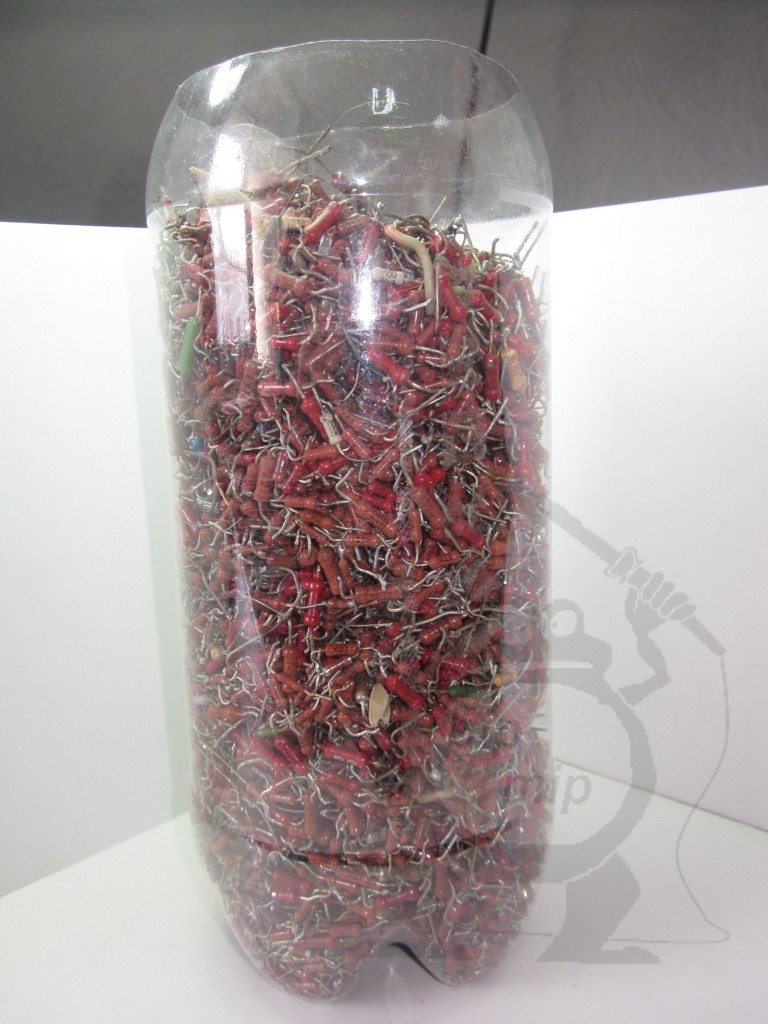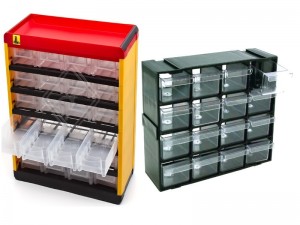It is the 21st century and to store various kinds of small parts like fishing hooks, beads and other small things, the industry produces special plastic boxes of all sorts of modifications, sizes and purposes. However, there are other options for solving the problem of organized storage of all sorts of useful little things. One of them will be considered in this article.
Storing radio parts in a cut bottle:
In many innovative endeavors, and especially in amateur radio practice, there comes that moment when you accumulate all sorts of junk, which is a pity to throw out and find enough space for it too. Of course, while laziness rules the ball, you catch yourself thinking “Ah… you can live like this, let it still be there”. For example, for a long time I kept all my resistors in a cut plastic bottle, in such a vulgar way as shown in Figure 1.

And every time I needed a resistor, I’d dump my stuff on a white cloth and sigh over it. At first, the idea of cutting off the neck of the bottle seemed good to me, and the “garbage can type” storage method was quite satisfactory. I was not even embarrassed by the long procedure of finding the right resistor rating. But every person’s brain boils at some point, and it was my turn.
No, I did not invent anything new — I turned to the classic solutions to this kind of problem. It is the 21st century and for storage of various kinds of small parts like fishing hooks, beads and other small things, the industry produces special plastic cassettes of all kinds of modifications, sizes and purposes. Take a look at the picture № 2 and you will immediately understand what I am talking about and how, approximately, all this good looks like.

It is very convenient to have in your arsenal neat, thought out to the smallest detail, miniature plastic boxes, but it does not cost cheap — although you have to pay for convenience, but any payment should be justified.
Alternative to plastic cassette holders and organizers:
Of course, there is an alternative to buying boxes. This is a recipe proven by many generations: cardboard, PVA glue, not much patience and many matchboxes — figure 3

I’ll tell you straightforwardly need to have patience, so this procedure is quite long and painstaking. To begin with, decide how many columns and rows of matchboxes you need for complete satisfaction. Then lay out exactly the first row and measure it. After you need a hard cardboard that would cut strips that you will lay between the layers of matchboxes. The cardboard strips should be the same size as the first row of boxes you have laid out. This will give you a guarantee of the strength of your construction and an acceptable aesthetic appearance.
The algorithm is as follows: put a strip of cardboard, smeared it with PVA glue (just do not pour a lot of it — otherwise everything will dissolve), laid out neatly, evenly the first row of boxes and slightly pressed; smeared a row of boxes with glue and put on top of the cardboard strip, neatly pressed. And so on until you build a huge paper and cardboard fortress.
I warn you at once: it is a long and tedious procedure that requires patience and attention. But then, when the whole construction dries, you just write on the boxes the nominal values of resistors from small to large and arrange the resistors on the corsets.Here and ready quite a cheap cassette for radio parts.

